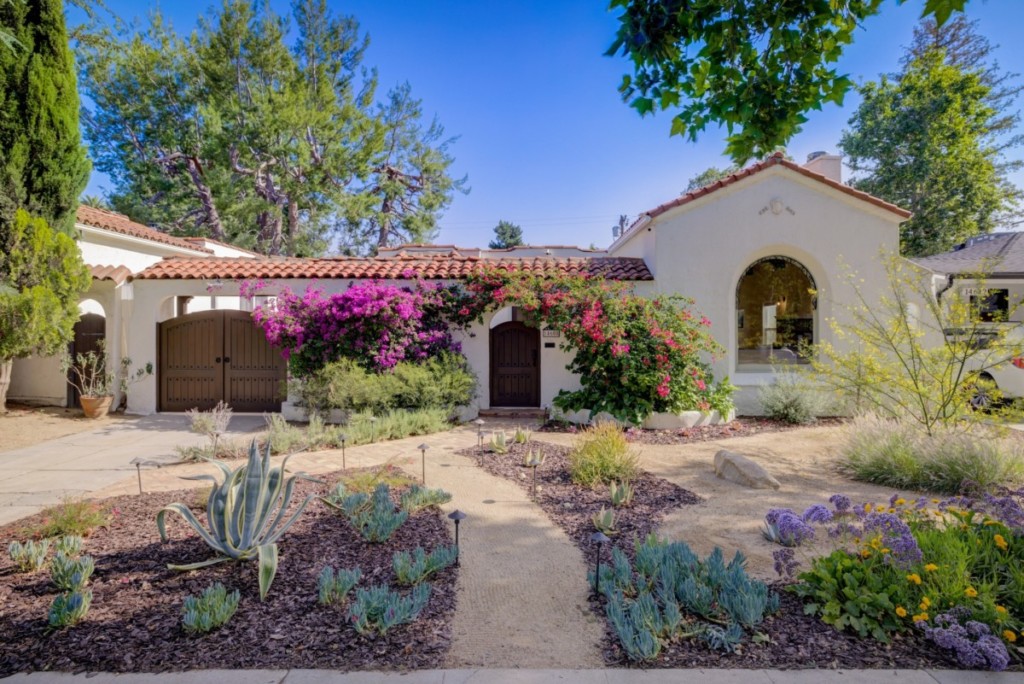Table Of Content

Adding mulch also helps to retain moisture and keeps the roots of the plants cool. If you live in an arid environment, a xeriscaped space can help you enjoy plant life with little maintenance and little water. Xeriscaping is also a good option for those who want to use fewer resources in general and invest a minimal amount of labor but still want a nice outdoor plant space. This is because of their lower water needs, but because these types of desert-oriented plants in this habitat are also quite hardy. Are you considering setting up your home with the perfect Xeriscape landscaping design?
Larger spaces make larger plants possible
Native plants or plants that will work in your hardiness zone will have deep root systems that allow them to access water stored in lower soil layers. Use low maintenance shrubs, succulents and perennial plants to create a structural layer of landscaping around trees. This low-growing sedum has color-retentive, cherry-red foliage, and is perfect for waterwise landscapes or patios. Eye-catching as a groundcover or accent in a rock garden or container. The spaces between the curb and sidewalk are sometimes known as "hell strips" because they tend to be hot, dry places. But they can also become a lush oasis with the right water-wise design.
Group Plants with Similar Water Needs

Also known as dryland farming, this method uses plants that have evolved to use water stored in the soil from the previous winter’s rainfall. Lifestyle journalist Sarah Wilson has been writing about flowers, plants, and garden design and trends since 2015. In addition to homesandgardens.com and livingetc.com she's written for gardeningetc.com, Modern Gardens and Country Homes & Interiors magazines.
Plant a drought-tolerant native tree or two
You can also use river gravel, lava rocks, pumice, and even crushed concrete as a decorative accent in your drought-tolerant landscaping. Bare soil is vulnerable to erosion, the seeds of weeds take root and it leads to water waste, but mulching has benefits that counteract all these. There are many types of mulch available and the main rule is 'the more the better'.
Succulent gardens: Tips for designing with drought-tolerant plants - The San Diego Union-Tribune
Succulent gardens: Tips for designing with drought-tolerant plants.
Posted: Sat, 28 Jan 2023 08:00:00 GMT [source]
She showed off the bold shapes and colors of modern design in the flower beds framing the front door. She brought in naturalistic elements including a dry riverbed of various stones flowing alongside the driveway. This fusion of styles works together to create a welcoming entrance to the home. A variety of grasses, flowering shrubs, and hardy groundcover plants are resistant to deer and the intense Texas climate while adding lush, tropical texture and color to the space.
The best landscape designs don't require hours of watering and maintenance - The Washington Post
The best landscape designs don't require hours of watering and maintenance.
Posted: Thu, 26 May 2016 07:00:00 GMT [source]
Expert Tips for Designing and Maintaining Your Waterwise Garden
Flora Terra’s trained team of drought-tolerant landscape design architects can create a sustainable commercial outdoor space. Our commercial landscape designers use colorful native plants and trees that thrive in your growing conditions and are easier to maintain. Designer Lisa created a lush, meadow-style landscape that provided space for everything the client wanted in their homestead with plenty of room to grow.
In gardens with wet clay soils, try planting in raised garden beds to provide them with sufficient drainage. Dry gardens can be an oasis with shady trees, low-water plants and heat-tolerant flowers for pops of seasonal color. Russian sage is another versatile option that offers both beauty and culinary uses. This classically beautiful plant has gorgeous purple, white, or pink blooms. Sage thrives in dry conditions with minimal supplemental watering.
Not all plants are as drought tolerant as cacti or succulents, and you’ll want to choose plants that grow to various heights so you can plan on putting taller ones farther back. Many ornamental grasses are drought-tolerant, requiring little supplemental water once established. Blue fescue provides multi-seasonal interest, with evergreen foliage and elegant wheat-colored seed heads that hold on all summer long.
If you are looking for the perfect landscape ideas to save water around your home, Xeriscaping is one of the best and most popular design types. Find out everything you need to know about this type of design, and what you can expect. Small rose-like flowers occur in a range of bright or pastel hues. This South American native is tolerant of heat, drought, poor soil and neglect.
The soil caused some challenges for us because it was clay and most of these perennials prefer more freely draining soil. So I asked my mom, "What is doing well? Let's see what's thriving and plant more of that." And what was thriving, even in the clay, were a lot of the succulents. Yes, the streaked iris foliage and the soft amethyst allium blooms are lovely in this simple combination. But what really stands out is how the threadlike stems and filament-like flowers of the alliums contrast with the wide, smooth leaves of the iris. If your low-water spot can only hold a couple plants, selecting ones with contrasting textures is a recipe for success. Every plant you purchase has a tag that lists the anticipated height and width of that plant.
Whether you live in the desert or a climate that receives more rainfall, there are many ways you can reduce usage or conserve water in your yard. Many plants supply showy blooms but require tons of water; in place of them, hardscape elements like this circular walkway of pavers around a gravel center furnish visual interest. Garden art, like the sculptures of a whimsical cat and an orb, also can offer interest in place of water-needy plants. This water-saving landscape still looks lush, thanks to the careful selection of shrubs and evergreens that require very little supplemental water (except in times of extreme drought). Drought-tolerant groundcovers, such as the thyme shown here weaving between large stones, provide a good way to catch rainwater that may run off the hardscaping, especially on a gentle slope.
Hen and chicks produce mat-forming clumps of rosettes with fleshy leaves in shades of green, blue-green or red. These succulents are virtually maintenance-free and adapted to dry conditions and lean soil. Some soils allow water to drain quickly, while others retain moisture. While some drought-resistant plants prefer rich soil that’s amended with compost or other organic matter, others such as cacti and succulents prefer leaner soil. In this garden, gravel serves as an inorganic, low-maintenance mulch around drought-tolerant succulents and grasses.
The easiest way to design a drought-tolerant landscape is with plants that don't require a lot of water to thrive. Native plants often make good choices because they're well adapted to your region's growing conditions. Plants from drier areas of the world, such as lavender shown here, also are naturally quite drought tolerant.


No comments:
Post a Comment